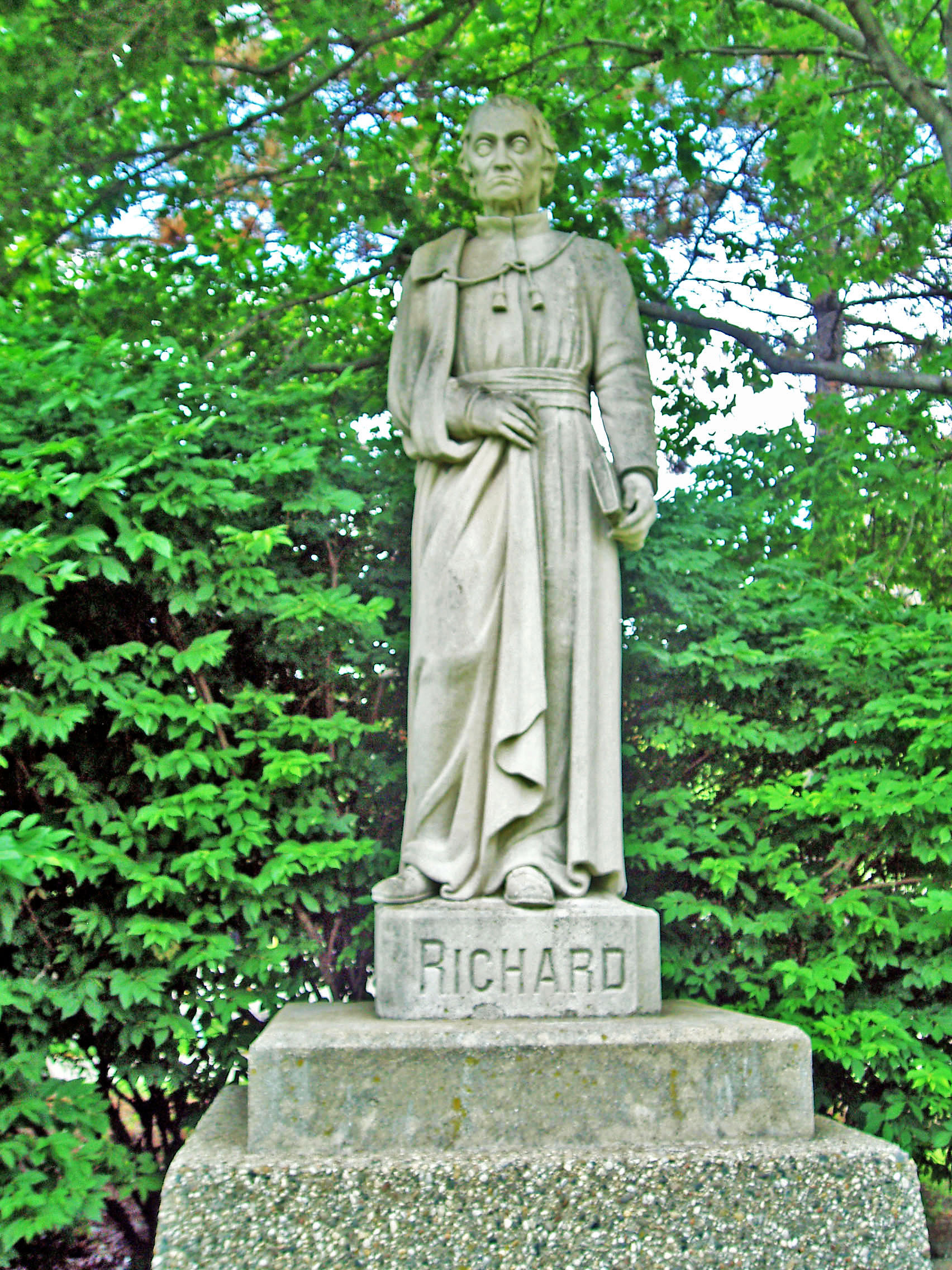
Father Gabriel Richard Statue
Facing Jefferson in the Gabriel Richard Park at East Jefferson and
Sheridan Street just northeast of the bridge to Belle Isle
Gabriel Richard, a Sulpician priest, was born in France in 1767, but left his country during its Revolution. He sailed to Baltimore and was originally assigned to missionary work with Indians in what is now southern Illinois near St. Louis. In 1798, he was reassigned to Detroit, a French-speaking village that had just been occupied by the United States in July, 1797 when troops led by Colonel Jean Francois Hamtramck entered the settlement. Gabriel Richard became an important leader in the development of Detroit and Michigan.
Father Richard carried the ideas of the Enlightenment and the French Revolution with him to Detroit. He brought the first printing press to Michigan. The first document published was a grammar textbook for students. He established schools for Indians and for women. In 1809, he published the first newspaper in the state, although it did not survive for long. After Judge Augustus Woodward was appointed by President Jefferson to bring Michigan toward statehood, Woodward moved to Detroit in June 1805 where he shared many of Richard's ideas. They helped to turn a small French village into a slowly-growing US town, although the fire of 1805 that destroyed all buildings and the British occupation during the War of 1812 impeded development for several years.
As early as 1806, Father Richard began promoting a system of schools. Judge Woodward concurred and, finally, on August 26, 1817, the territorial legislature chartered a Catholepistemiad. This was Woodward's conception of an advanced school based, at least in part, upon his own education at the University of Virginia and his knowledge of European university. This legislation called for territorial support of education at all levels, specified that education should be supported by taxes and should be nonsectarian and that tuition fees should be low. Father Gabriel Richard recruited a young Princeton-educated Presbyterian minister, The Reverend John Montieth, to serve as first president of the Catholepistemiad, an institution that evolved into the University of Michigan.
From 1823 to 1825, Gabriel Richard served as the territory's representative in Congress. There, he successfully sought federal support for building a road from Detroit west to Chicago. At this time, almost all transportation was by water. There were Indian trails that ran throughout Michigan, but they were not paved, so they were frequently impassible and, even when dry, mandated very slow travel and light loads. So Father Richard obtained federal funds for planking these early roads, allowing them to be used somewhat more.
Father Richard was appointed pastor of St. Anne's in 1802. He died in 1832 after ministering to the sick during the great cholera epidemic that killed many Detroit residents, especially the poor. He is buried in a marble vault in St. Anne's Church.
This granite statue of Father Richard was created by Leonard Jongwirth and supported by the Works Project Administration's Federal Arts Project. He portrays a strong and pensive Richard with his professorship clearly indicated by the traditional robes of his order and a book of Sacred Scripture in his left hand. Jongwirth taught at Michigan State for many years and may be most remembered for his statue of a Spartan on the East Lansing campus.
Sculptor: Leonard D. Jungwirth
Date of Completion: 1940
Photo: Ren Farley, August 2002
Description updated: July, 2012
Return to Public Art and Sculpture